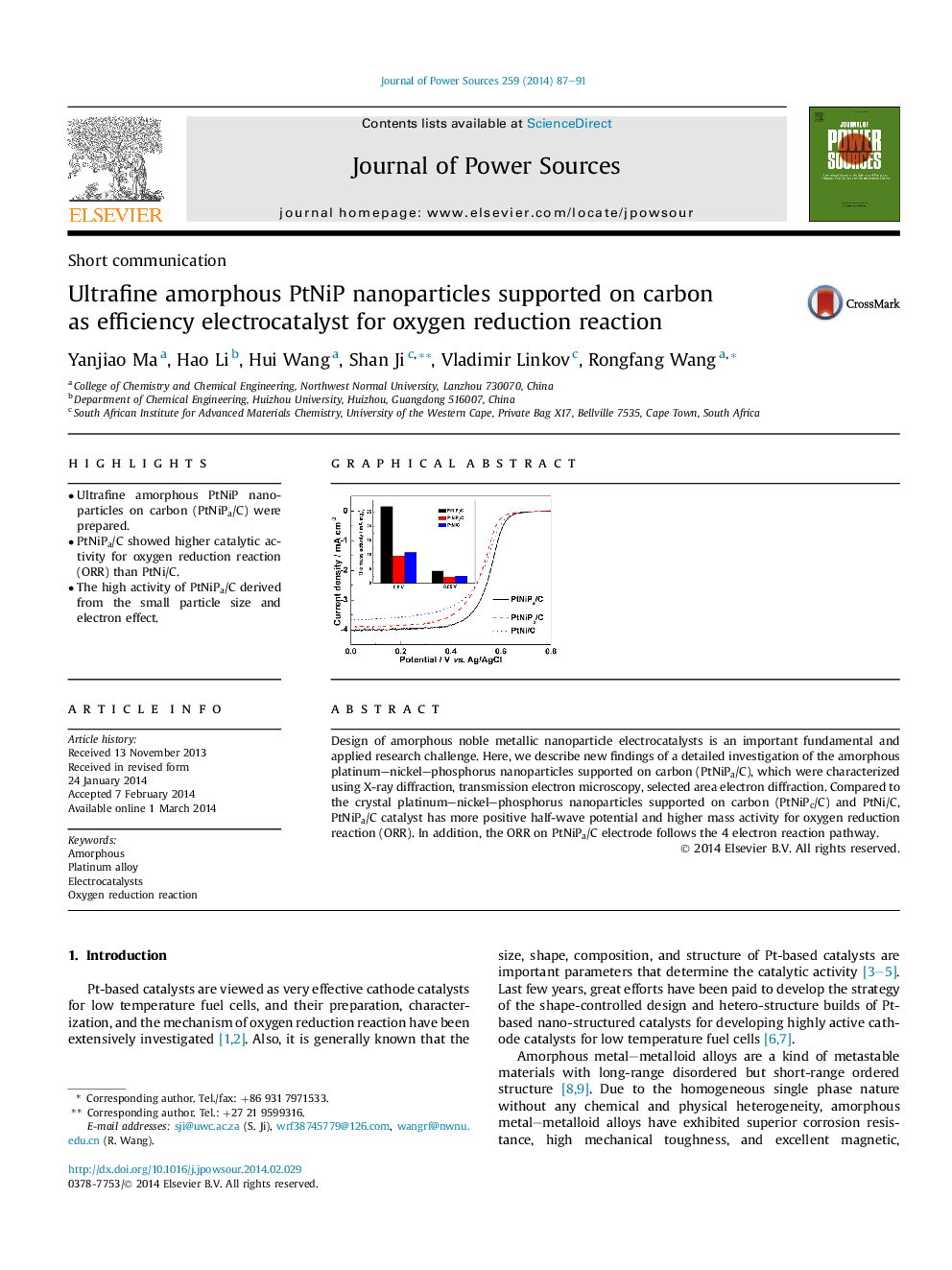| Article ID | Journal | Published Year | Pages | File Type |
|---|---|---|---|---|
| 1286852 | Journal of Power Sources | 2014 | 5 Pages |
•Ultrafine amorphous PtNiP nanoparticles on carbon (PtNiPa/C) were prepared.•PtNiPa/C showed higher catalytic activity for oxygen reduction reaction (ORR) than PtNi/C.•The high activity of PtNiPa/C derived from the small particle size and electron effect.
Design of amorphous noble metallic nanoparticle electrocatalysts is an important fundamental and applied research challenge. Here, we describe new findings of a detailed investigation of the amorphous platinum–nickel–phosphorus nanoparticles supported on carbon (PtNiPa/C), which were characterized using X-ray diffraction, transmission electron microscopy, selected area electron diffraction. Compared to the crystal platinum–nickel–phosphorus nanoparticles supported on carbon (PtNiPc/C) and PtNi/C, PtNiPa/C catalyst has more positive half-wave potential and higher mass activity for oxygen reduction reaction (ORR). In addition, the ORR on PtNiPa/C electrode follows the 4 electron reaction pathway.
Graphical abstractUltrafine amorphous PtNiP nanoparticles supported on carbon showed a higher activity than PtNi and crystalline PtNiP nanoparticles supported on carban for oxygen reduction reaction, which is attributed to the small particle size and electron effect.Figure optionsDownload full-size imageDownload as PowerPoint slide
